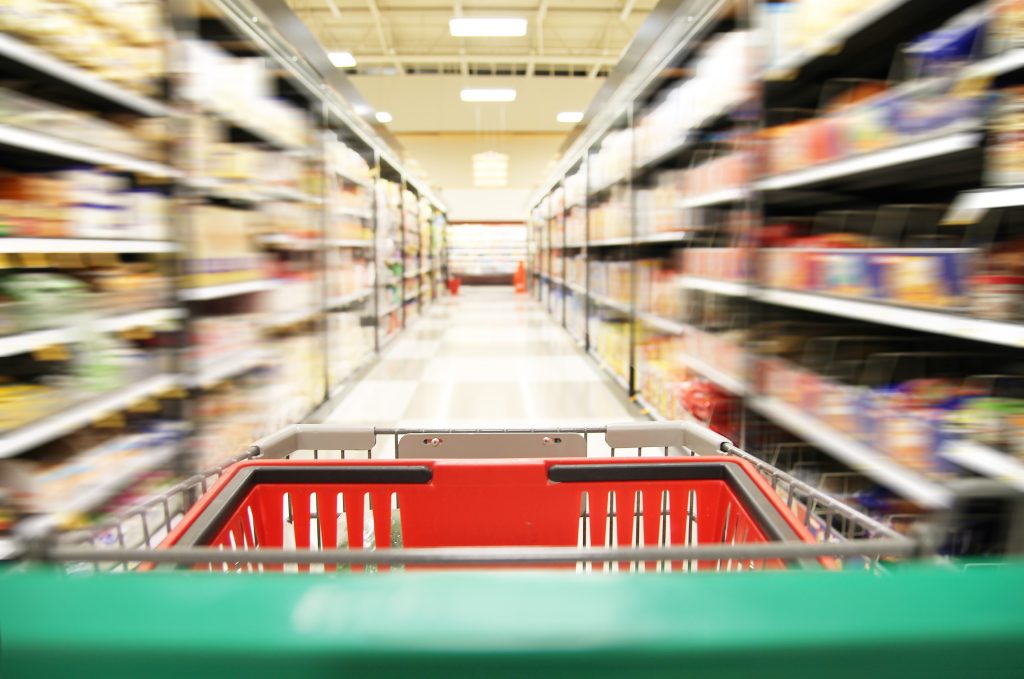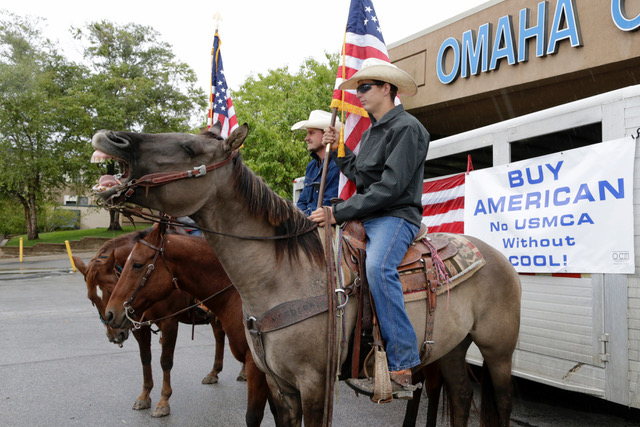How does our food make it from the farm fields to the table? The answer used to be simple, but in the past 100 years, it’s gotten a lot more complicated and increasingly hidden from the public eye.
The term supply chain is used to describe the journey that any product makes from start to finish. For clothes it might start with cotton, for electronics it starts in an ore mine, and for food, the journey begins with seeds and soil.
When it comes to food, we used to be able to depend on farmers to be in control of what they raised. It made sense for the farmer to control food production, working with processors and stores to make sure that beef or potatoes produced were safe and ready to make it into our grocery bags. But as our economy was co-opted by larger and larger corporations, this way of food and farming gave way to the age of international food and agriculture monopolies.
Growth-prioritizing companies like JBS and Cargill stepped on the scene with the view that food is a golden opportunity to make a buck — after all, everyone needs to eat. To them, controlling the food supply chain has led to unimaginable profit and power. Oh and feeding people? For them it’s barely an afterthought.
But how did we get here? Well, the Big Ag giants figured that the more steps they control in a potato or cow’s journey from the field to the table, the more say they have in what production will look like and cost, how workers will be treated, and how much a product can sell for once it hits the shelves of a store. And if you don’t like it, you can get out of the business altogether.
Big Ag giants justified this power grab in the name of efficiency: controlling the majority of the food supply chain would drive down production costs, ultimately reducing prices for the consumer and leading to beneficial innovation. But this isn’t necessarily true. The past few decades have been riddled with price fixing and collusion by these corporate giants, leaving farmers with less and less compensation for their products, driving up their production costs, and delivering sticky, ever-increasing prices to consumers. In the past couple of years, we have seen dominant meat, egg, fertilizer, and grocery companies all under fire for fixing prices at all time highs — driving up food costs for American families and eroding the farmer’s share of the consumer dollar.
For international corporate giants, controlling one part of the food supply chain is not enough. There is more money to be made and market power to be gained if these companies cooperate with one another, making sure to control the movements of food from field to shelf as much as possible. They’ve come up with a few clever ways to do this:
Vertical Integration: When one company controls two or more stages of food production, processing, and distribution that would normally be operated by separate companies.
Tyson Foods is a great example: they own and oversee the poultry breeding stock, the chicks and chickens that contract growers raise, the feed and medicine the birds receive, the processing of the chickens, and the transportation of the product to the retailer.
Tyson’s ownership over the poultry production process means that poultry farmers have very little control over their income and are at the complete mercy of Tyson (or whichever meatpacker that they contract with).
Research from the Roosevelt Institute shows that at this point in time, vertical integration doesn’t necessarily even reduce costs for corporations, but it does build power. This finding is in line with Farm Action’s 2020 report, The Food System: Concentration and Its Impacts.
Backward Integration: Similar to vertical integration, but it typically starts with the retail stores we know, like Kroger, Walmart, and Amazon. Backward integration is when one of these retail companies buys or merges with a company that is already making the product they want to control and sell.
For example, Walmart has now integrated upstream to increase its control over both milk and beef. The immensity of Walmart’s size (approximately 35% of the retail market) already gives it undue power to influence market prices, but by investing in milk and beef processing plants, it increases its control even further, impacting the price farmers are paid across the country.
A food system that is controlled by a handful of corporations has led to higher prices for consumers, worse pay and working conditions for workers, inhumane conditions for livestock, and environmental degradation of air and water quality that has been pushed off on the community and taxpayers.
Communities of color are particularly likely to deal with the harmful environmental effects of these practices. But when there’s money to be made you can bet that these corporations will do whatever it takes, often at the expense of marginalized communities.
Horizontal Integration: Refers to expanding control at the same level across the supply chain. Ever walk through a grocery store aisle and marvel at the hundreds of colorful cereal boxes? According to the data published by Dr. Mary Hendrickson and her team in The Food System: Concentration and Its Impacts, 83% of the cereal you see is owned by only 3 companies. This is horizontal integration.
A great example of this is the Heinz and Kraft Foods merger, where this food and beverage company now owns over 200 household food brands as of 2020.
So What Now?
Supply chain integration is not problematic on its own. When we think of a local farmer or a cooperative owning and breeding their own chickens, processing and packaging them, then selling them to a grocery store, we see a resilient local food system at work. The idea is that many farmers can do this at once, creating healthy market competition and fair prices. The problem arises when corporations put too many of our eggs in one basket.
Unbridled integration by a few corporations has led to a stark decrease in market competition, and allowed these few corporations to amass unprecedented power and control over the way billions of people work and eat. When one link in these massive, integrated chains breaks, the effects are felt by many, with vulnerable communities hit the hardest.
The bottom line is that we need to break up these corporate giants and invest in strong, resilient local and regional food systems. And resiliency means that we do not put all of our proverbial eggs (in this case, the world’s food supply) in one basket.
Written by Anna Straus; edited by Angela Huffman; concept developed from “The Food System: Concentration and Its Impacts” report by Mary K. Hendrickson, Philip H. Howard, Emily M. Miller, and Douglas H. Constance. Updated in August 2024 by Sarah Carden.




